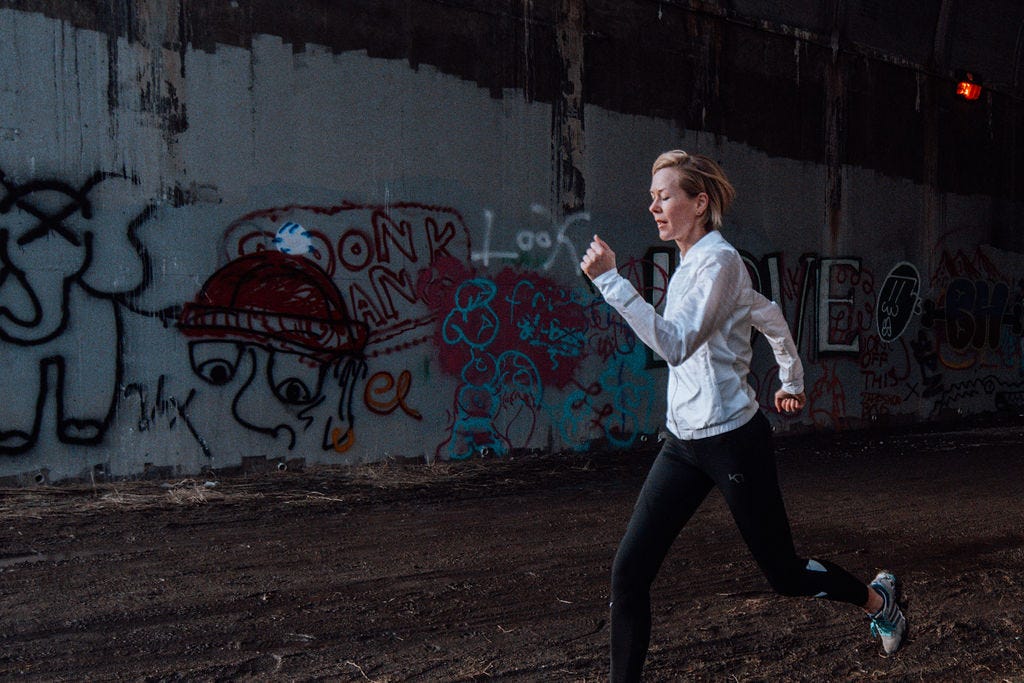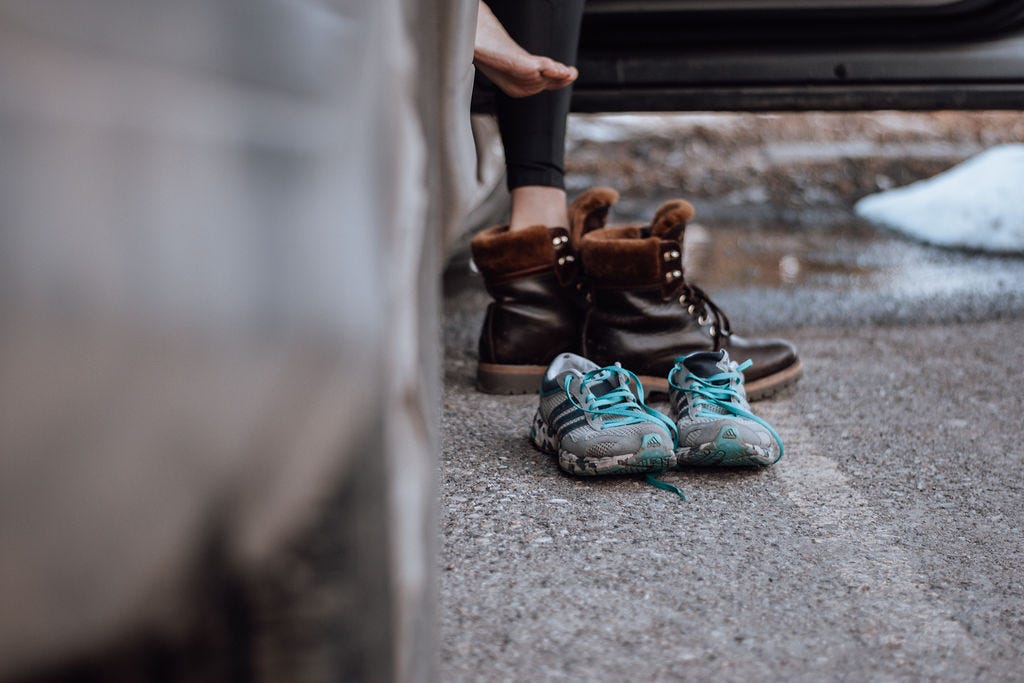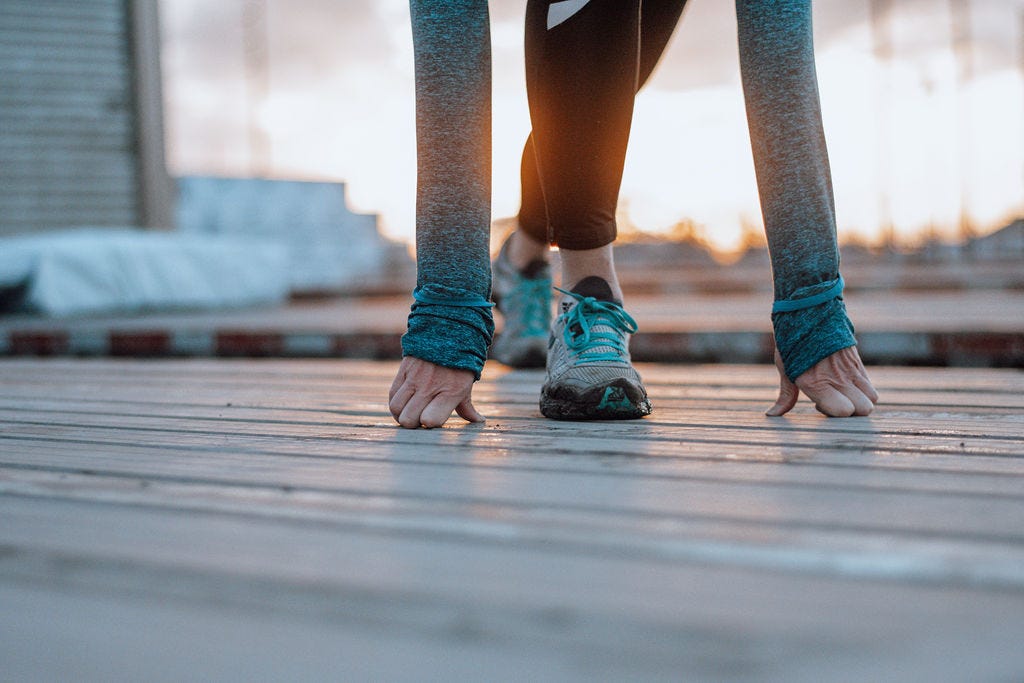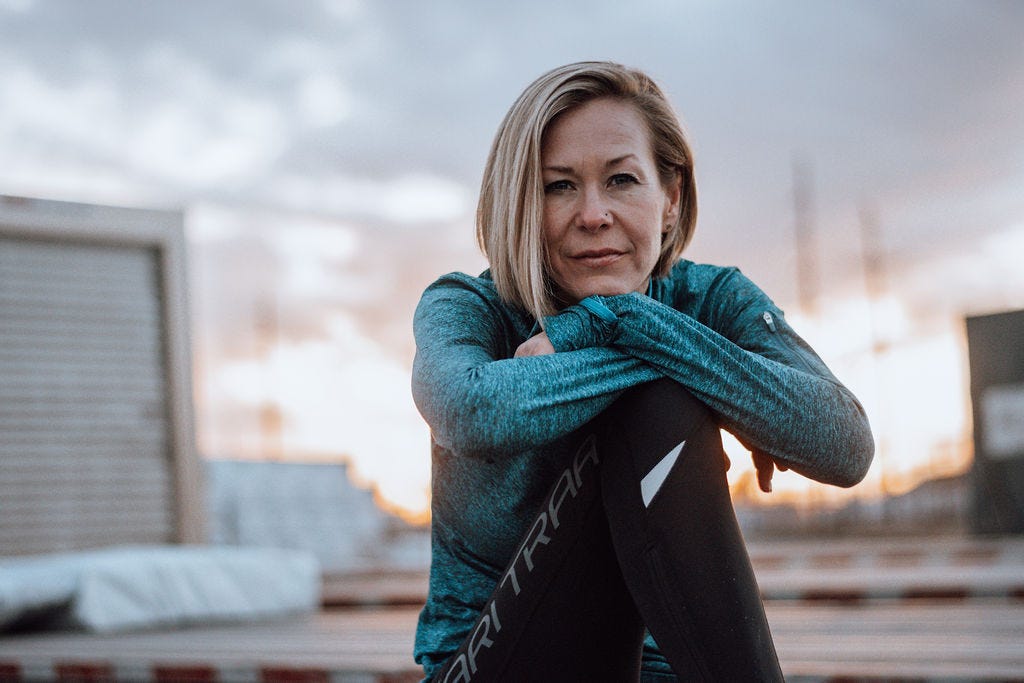Running Toward Home
Where I discovered a new identify, and the quiet revolution that followed.
I didn’t know it at the time, but I was beginning something that would change me from the inside out.
It was a gray December afternoon in Oslo. Cold, damp, quiet. One of those winter days when the sky presses low and everything feels muffled, as if the city itself is asking you to move slower, speak softer.
I was sitting in the living room of my temporary flat, scrolling through Audible in search of a new book. I wasn’t sure what I was looking for exactly.
Comfort? Clarity? Distraction? I tend to devour audiobooks for all those reasons and more.
And then I saw it: a free half-marathon training program. I went ahead and downloaded it. I had never even run a 5K.
I didn’t download it because I was planning to run a race. I downloaded it because, just days earlier, while reflecting on the year that was ending and the new decade on the horizon (I had no idea what 2020 would actually bring!), an absurd thought had popped into my head:
“I want to become the kind of person who runs marathons.”
Absurd, because I had spent most of my life actively avoiding running. During my time in Colorado, I’d flirted with it; occasional short jogs around the block, nothing serious. I was surrounded by ultra-runners: my roommate, a coworker, the mountain community around me.
Those long trail runs seemed impressive, admirable... and completely unattainable – or even desirable.
At the time, I struggled to run two miles, let alone thirteen. I wasn’t even remotely interested in running that kind of distance. To me, running was painful and something to be avoided.
But somehow, in the quiet of that Oslo winter, as I envisioned my second act – the next half of my life – I begun to believe it was possible.
That I could become the kind of person who could, and would.
That single decision, tapping Download on a whim, marked the beginning of a quiet revolution.
It wasn’t about fitness. Not really – although a growing desire for health and longevity was certainly part of it. It was about protecting my heart and my brain. After my dad’s heart attack a few years earlier and more recent symptoms of dementia, I knew I needed to pay attention to my cardiovascular health.
It was also about grounding. About reclaiming something steady when everything else felt uncertain. In a way, it was about coming home to myself.
With coach Katie on Audible in my ears and cold air in my lungs, I headed out for my first training run. I ran (slowly) for 25 minutes without stopping. The next run was 30 minutes. My only goal was to keep a running stride, however slow, without stopping to walk. I completed that one too.
Something was stirring beneath my ribs that felt a lot like hope… maybe even a smidge of triumph?
I wasn’t training for a race. I was training for my life.
Running returned me. To breath. To rhythm. To myself.
The Old Story
To understand why those first few training runs seemed so revolutionary, you should probably know the story I’d been telling myself for decades.
It started when I was seven.
I was sitting at my desk in my first-grade classroom at Fossumberget Skole in Stovner, Oslo, listening to my classmates talk about the sports leagues they were part of; soccer and team handball for the most part. One of the prettiest girls in class was a competitive ballroom dancer who performed for us at class functions in glittering shoes and satin gowns.
And I remember thinking, with the quiet logic only a first-grader can summon:
“It’s too late for me.”
They’d all started at five. I was seven. How could I ever catch up?
So I stuck to what I was already good at: reading, writing, spelling. I was the academic kid. That’s where I excelled and received positive attention. That’s where I felt safe.
And, quietly and without drama, I decided: running just wasn’t for me.
Years later, in high school, I tried again. There were moments of magic – misty morning runs, discovering new neighborhoods. But then came the shin splints. The pain was unbearable and my legs were swollen for weeks. I took the message my body sent as a sign and put running back on the shelf.
In college, I gave it another go, briefly. But again, it was hard and painful. So instead of running, I power walked the school’s “fun run” with no training, and I even passed a few runners with my furious long-legged walking pace. I crossed the finish line flushed and purple-faced, gasping for air. Someone asked if I was okay.
Once again, I decided running just wasn’t for me.
So yes, when I hit Download on that training program at the end of 2019 in Oslo, it wasn’t just about fitness.
It was a quiet revolution. A dismantling of a decades-old belief.
I wasn’t just starting a new habit.
I was rewriting an identity I’d held since I was seven years old.
I was becoming someone I never thought I could be.
Someone who ran.
Someone who didn’t quit.
Someone who believed it wasn’t too late.
Coming Home, One Step at a Time
I didn’t become a runner when I crossed a finish line.
I started becoming a runner the day I stopped believing it was too late.
The day I chose to begin again– for no one but myself.
The day I recognized that breathless steps, aching legs, and the quiet thrill of showing up for yourself, beating your own expectations, could feel a lot like coming home.
And maybe that’s what home really is.
Not a place.
Not a finish line.
But a return. A remembering. A rhythm that says: this is who I’m becoming.
I’m in it for the long run.
💭 Reflection Prompt:
What story about yourself are you ready to rewrite or revisit – for the long run?







Hannah, except for the running, I can identify with so much here, especially “It’s too late for me.” Beautifully written.
Hannah, I loved reading this. I also started a "whole person" transformation, a step into a life of confidence, by beginning to run at age 44, something I never believed I could, or would do. Two years after my first miserable day of group training, when I never believed I could put in a single mile, I ran and finished the Boston Marathon as an invitational runner, on the clock, at a solid and consistent 12 minute, 15 second mile. The same year, I got certified as a USA Triathlon Race Director.
I was never an athlete as a young person, but like you, I wanted to be that dedicated person who ran, who didn't give up. And I'm still that person.
It is never too late to build a fuller life. People often asked me how I became a marathoner at 44. I tell them, "One foot in front of the other." That's my mantra for life now. It takes time to build the life you want, truly find home, and become the person you want to be. But if you break it down and don't become overwhelmed, it is achievable to find and center around your "home."
I loved this part of what you wrote. SO beautiful:
"I started becoming a runner the day I stopped believing it was too late.
The day I chose to begin again– for no one but myself.
The day I recognized that breathless steps, aching legs, and the quiet thrill of showing up for yourself, beating your own expectations, could feel a lot like coming home.
And maybe that’s what home really is.
Not a place.
Not a finish line.
But a return. A remembering. A rhythm that says: this is who I’m becoming.
I’m in it for the long run."
Hannah, it makes me smile now when I realize that I have, in a small way, also been a part of your journey, when I lent you my cheap running jacket on a cold and rainy day at No Longer Virtual in Missoula. Hugs friend!